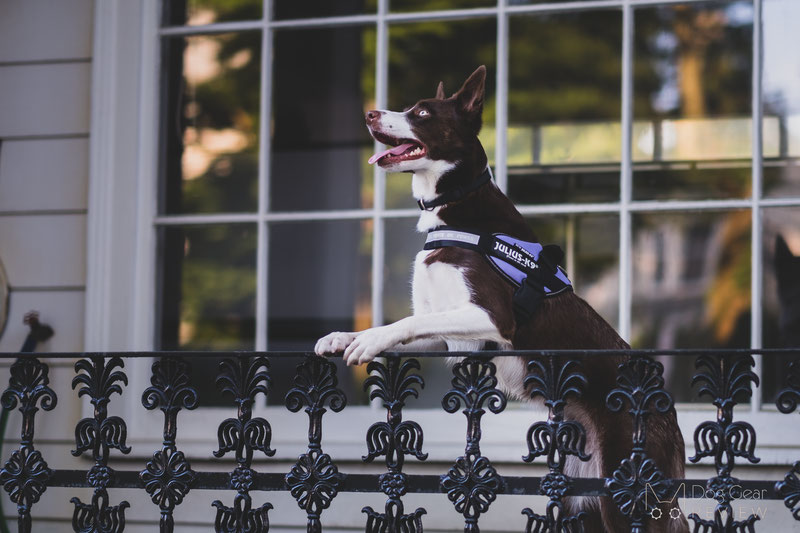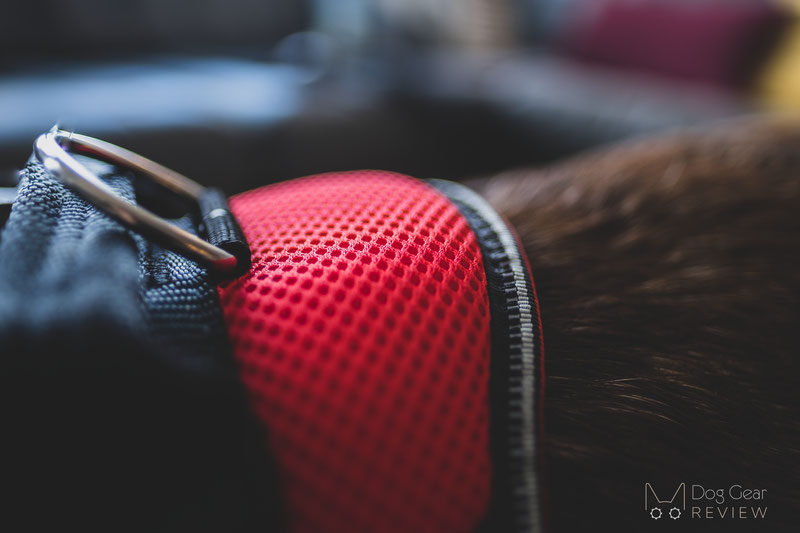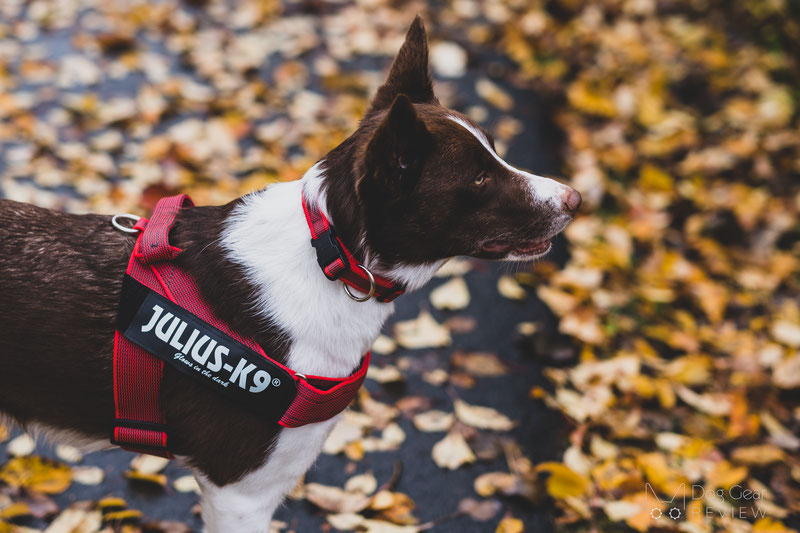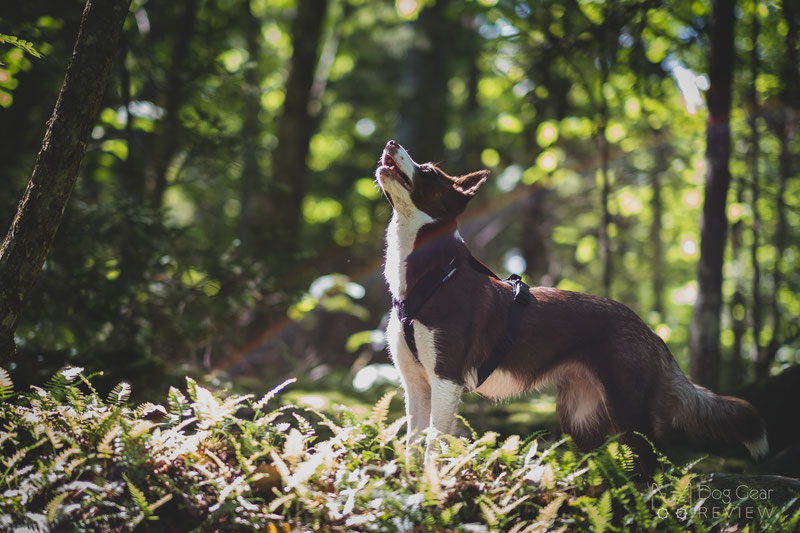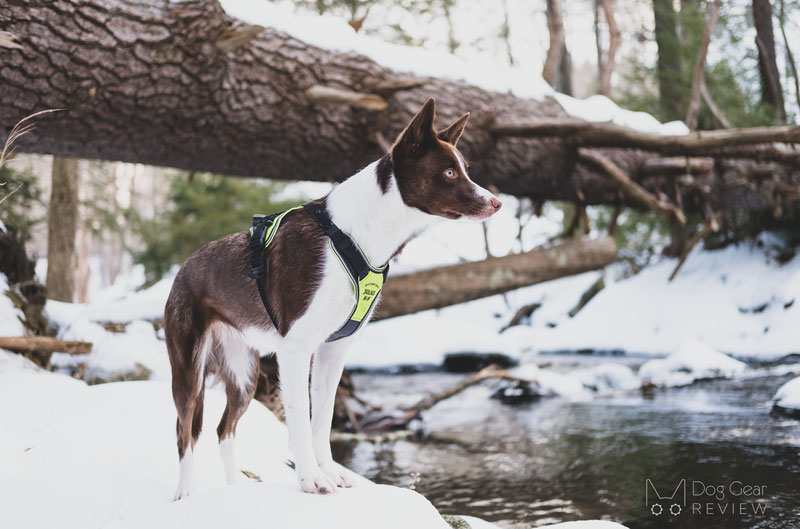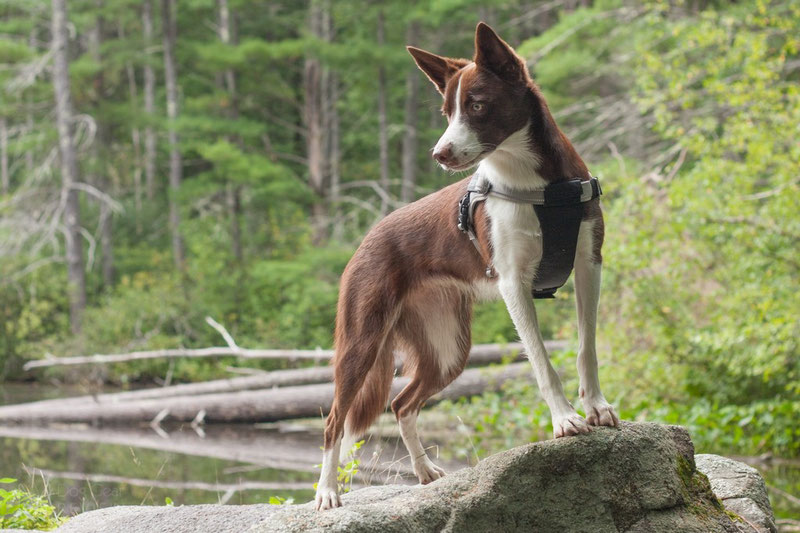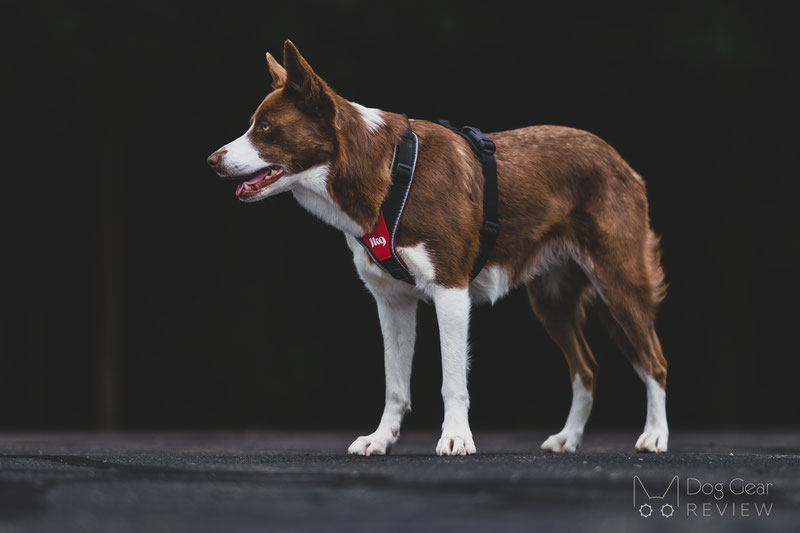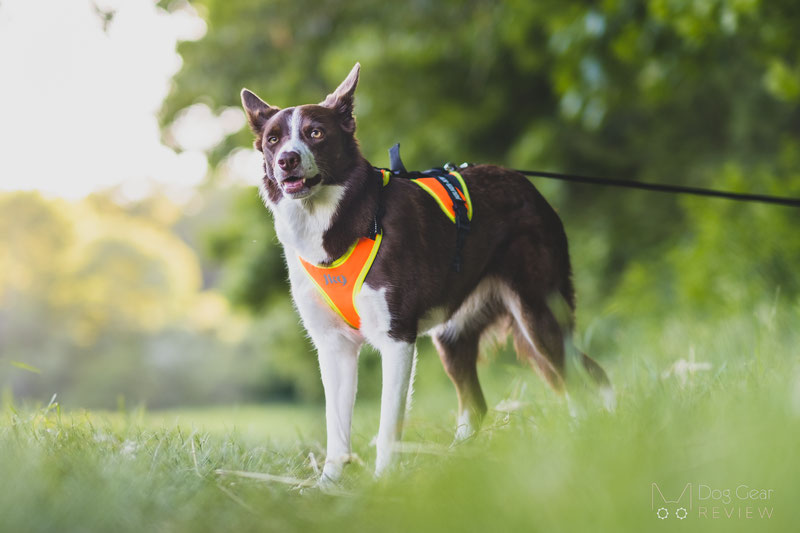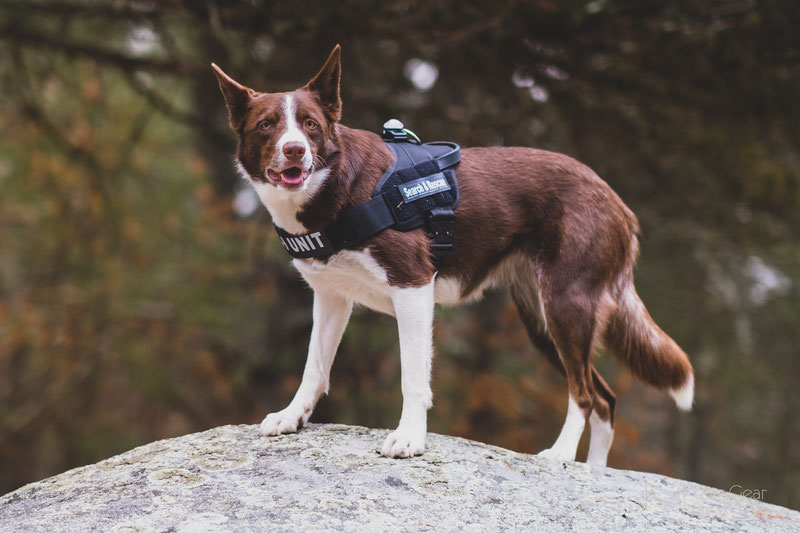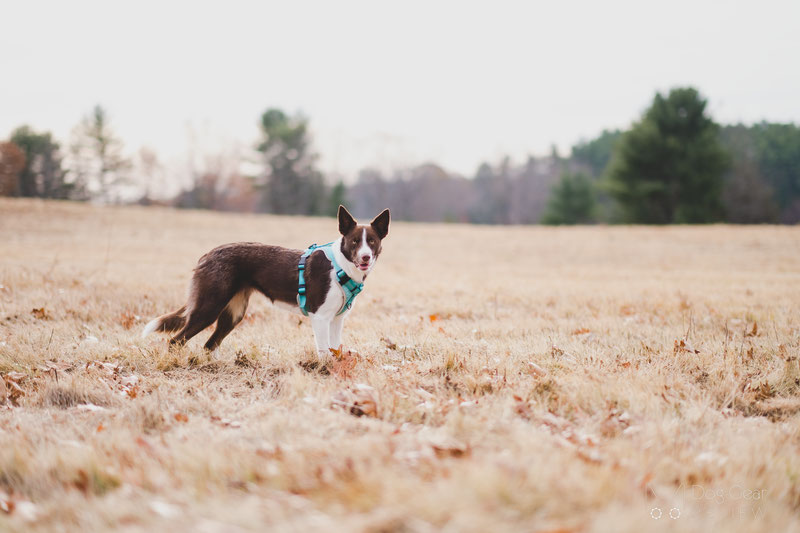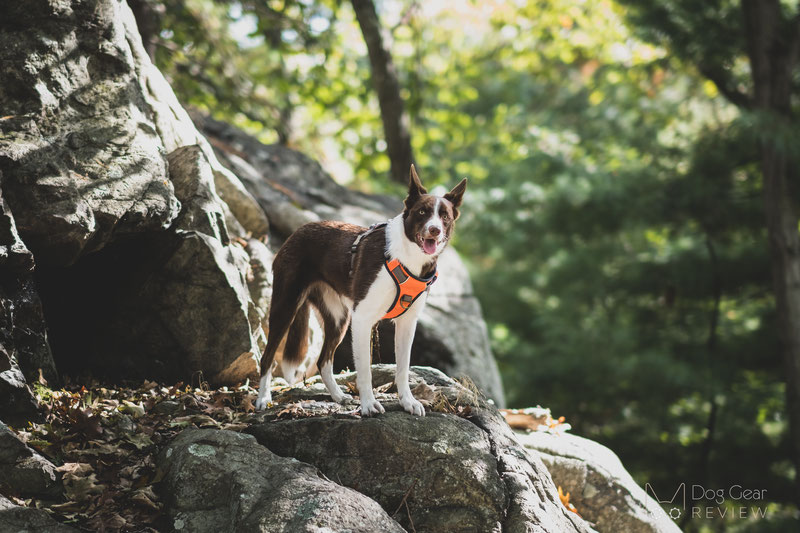About Julius-K9
Julius-K9 started as a small, Hungarian family business in 1997, and since then, they sold more than 7 million products - many to police units and for service dogs. They are also one of the few companies that do extensive testing on their products and conduct researches to understand better what works best for the dogs.
Norwegian Harness vs. shoulder joint
Before jumping in the review of this harness, we have to stop for a second and talk about the common misconception that all harnesses going across the shoulders restrict the dog’s shoulder movement; therefore, they shouldn’t be used. To adequately address this topic, we wrote an article to discuss when this is true and when it is safe to use. We also discuss the proper adjustment and position of these harnesses on the link above, so check it out if you are interested.
To summarize the article, if these harnesses are correctly fitted and not used for a dog who pulls, they are safe to use and do not restrict movement.
IDC® Powerharness Review
This is a high-quality harness with tested materials, made with attention to all the small details. The saddle part comes in a lot of different colors and patterns; it is tough to pick only one! The front strap is held together by durable velcro. At first, this doesn’t seem like a safe solution, but it holds well. Adjusting it can be harder than using a slider as on the TLH5753 harness, but it will stay there for sure, doesn’t get looser by time. The big buckle of the chest strap is also sturdy and easy to use.
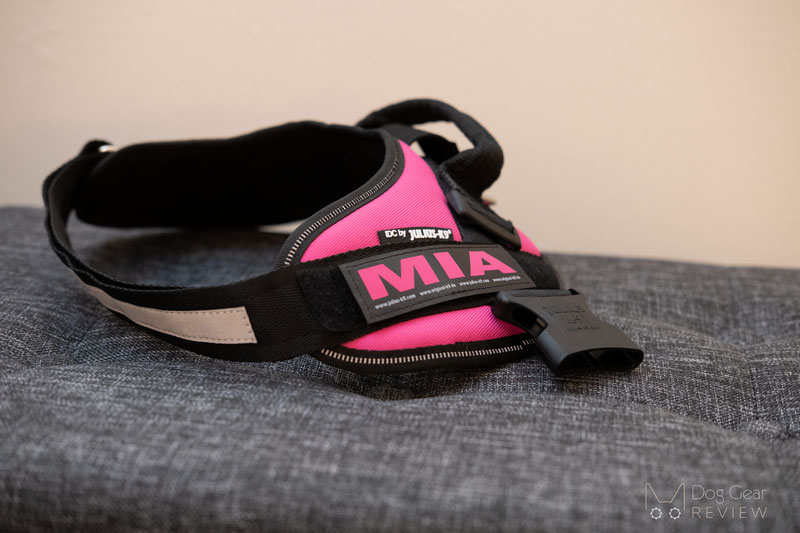
The front strap and the edge of the harness are reflective, which makes it highly visible in the dark. All of the harnesses come with phosphorescent, interchangeable “Julius-K9” patches.
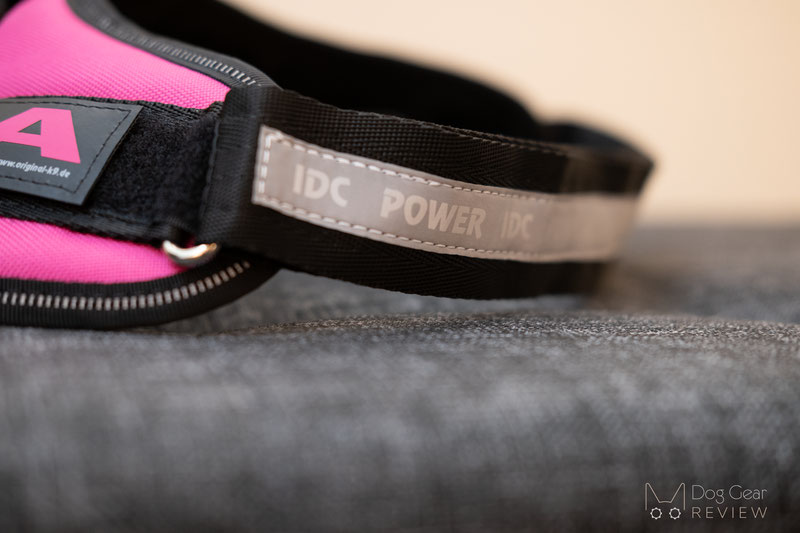
I am most impressed with the handle on the back. You can choose to cover the stainless steel ring and/or the handle with a rubber strap to make it safer when your dog runs free on a hike and would have a chance to get stuck on something.
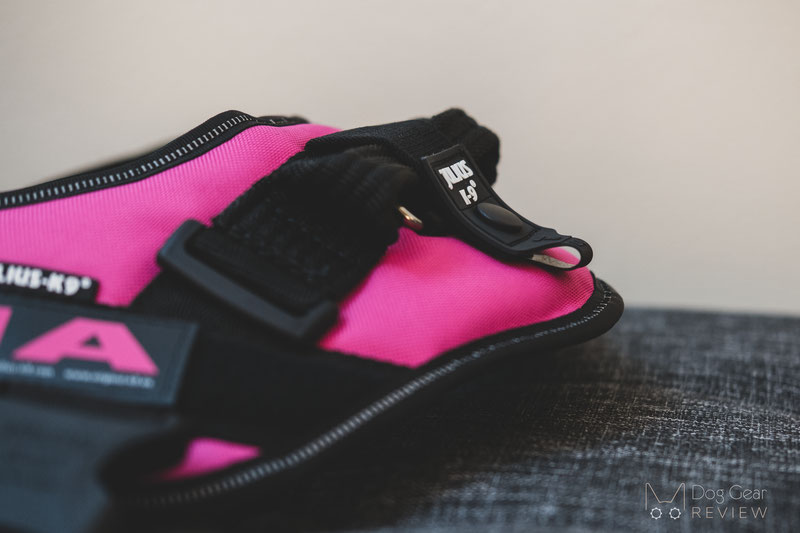
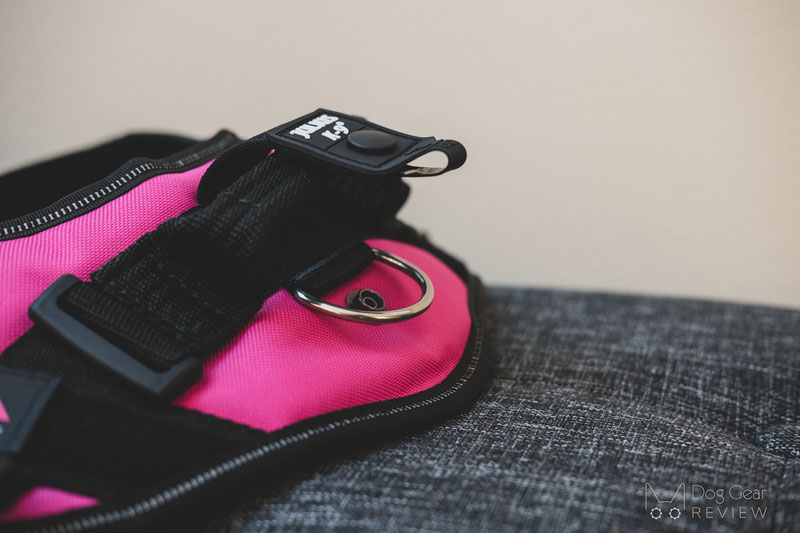
Since I tested the similar TLH5753 harness before, I was surprised about the big difference of the saddle material of the two harnesses. On pictures, they don’t look that different, but they are. First I liked the soft, sponge-like material of the TLH5753 harness but I quickly realized that they collect mud, water and dog hair like a magnet. It wasn’t easy to keep it clean and also got heavy after a swim or a rainy walk, making the harness slide to the side of the dog. The material of the K9 harness is thinner and more firm. It doesn’t collect the dog hair and doesn’t get as heavy when it is wet. Probably this is the reason why we haven’t had much trouble with the harness sliding on the dog, as we described in the review of the TLH5753 harness.
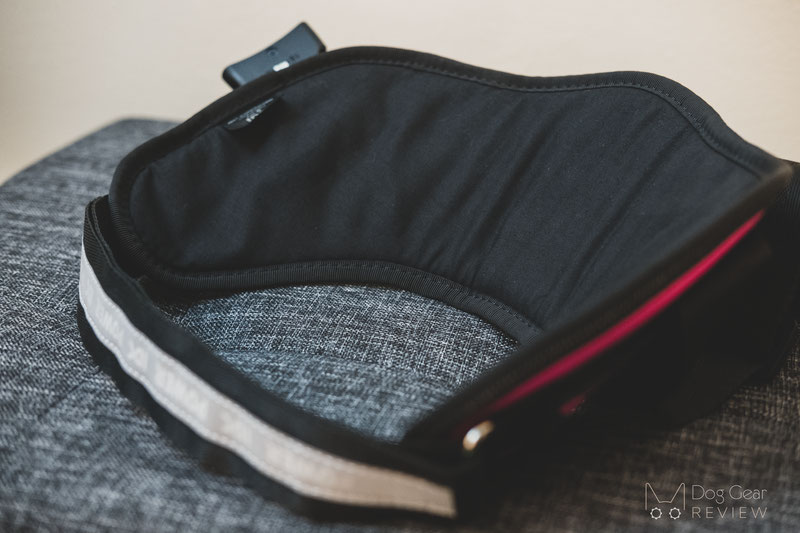
One thing to mention is that the velcro overlaps a little bit with the attachment of the front strap. It was designed this way because it proved to protect the patch from scratches. After using it for a while, you will see signs of wear on this end but will hold up well.
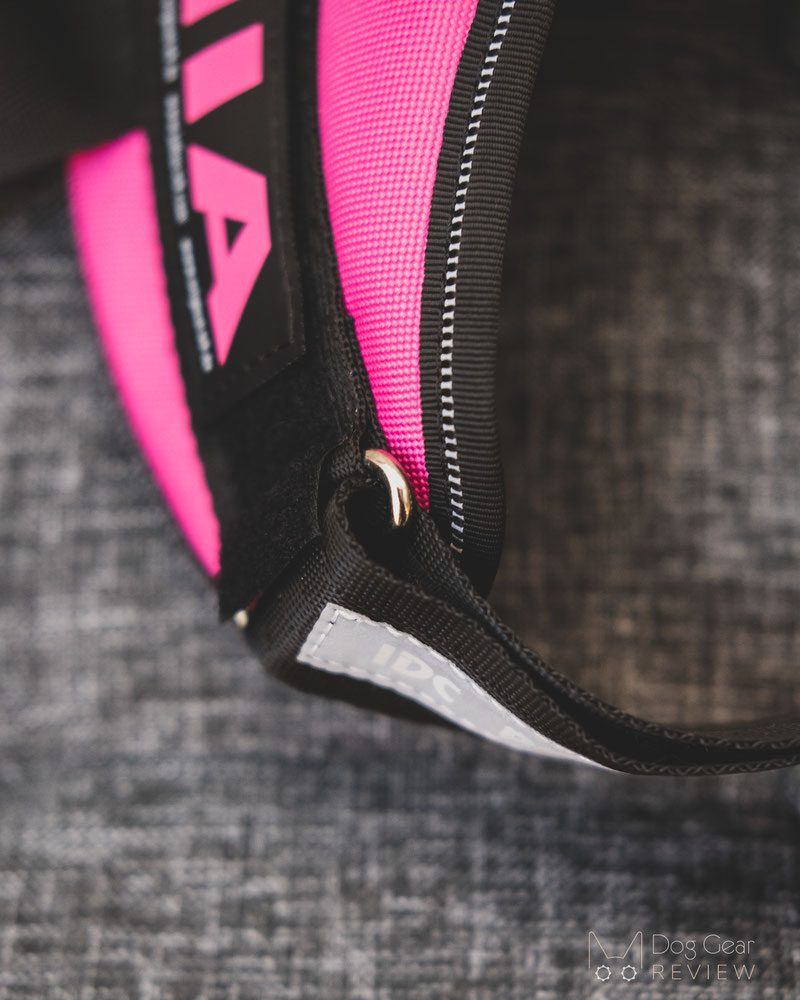
How is the IDC harness different than the other Norwegian harnesses?
We had a hard time figuring out the difference, but once you see it out, it is so clear. Most of the Norwegian style harnesses (as the older version of this IDC harness) have a vertical front strap as you can see it on the right side of the picture below. This can work well for many dogs, but in some cases, the front strap can sit too high up and put pressure on the dog’s neck. This can be solved by using a chest pad that you can buy separately from the company to pull the front chest lower. The IDC harness has this functionality “built-in.”
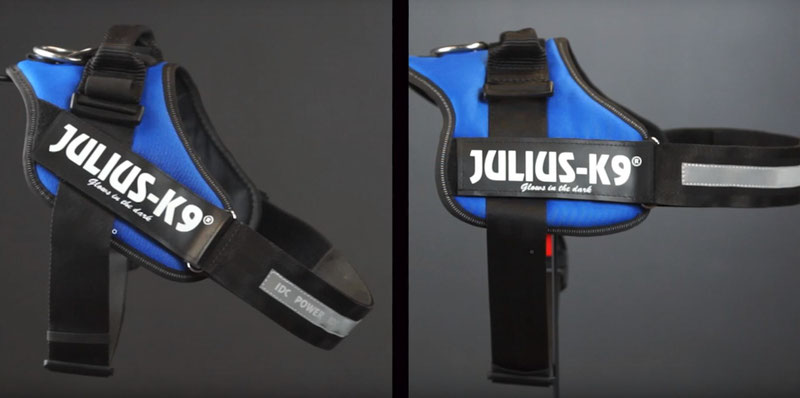
The above picture is a screenshot from this video, where they explain all the differences between the “old-type” K9 harness and the IDC Powerharness.
Julius-K9 Harness Accessories
Julius-K9 offers different accessories that you can easily attach to the IDC power harness. We tested a few of these and included the review below.
IDC® Pressure Distribution Pad Review
The Pressure Distribution Pad can be attached to the two straps of the harness with durable velcro. The goal of this attachment is to distribute the pressure, stabilize the harness and also to help to adjust the position of the neck strap if needed. On some dogs, the front strap can slide higher up and put pressure on the lower neck, but using this pressure pad, you can bring the neck strap down.

While the material of the Distribution Pad is soft, it is thin and durable. The pad comes in four sizes, and the design of the smaller and bigger sizes are slightly different to leave enough room between the front legs for comfortable walks. Mia needed size 0 (same as her harness size), which has reflective edges, but e.g., the mini size doesn’t have that.
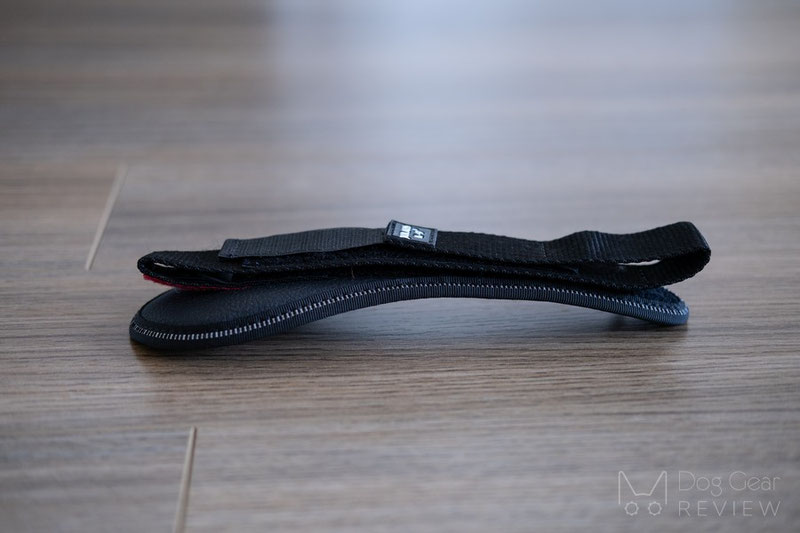
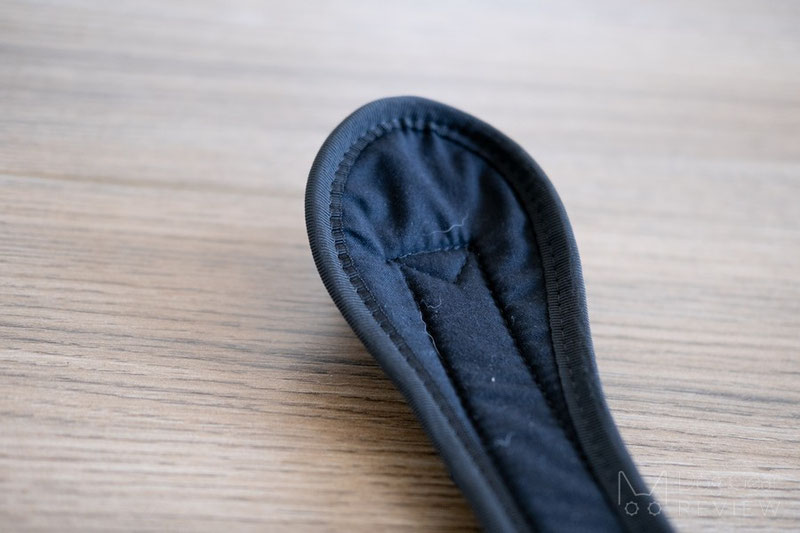
The process of attaching the pad can be confusing, but this video and the picture below explains it nicely.
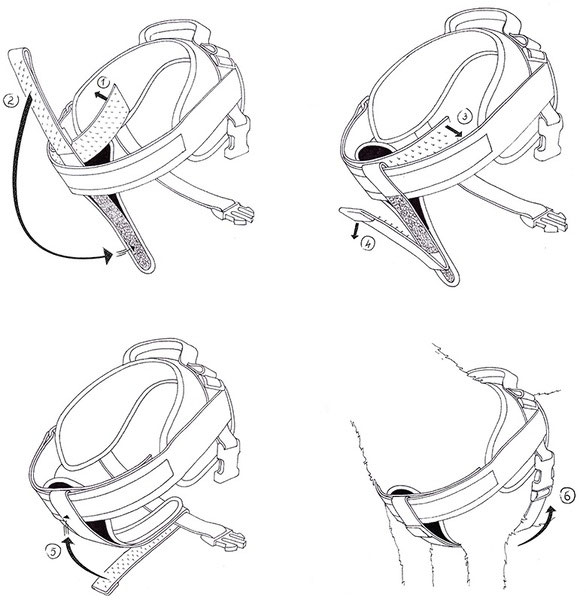
We previously had bad experiences with chest pads that were attached by velcro because they usually start collecting dirt and stop holding after one or two hikes. I have not had this issue with this one yet - probably because the velcro covers both sides all the way. The top part of the chest pad is also securely attached between the two-part of the neck strap.
We only run into one quality issue with the Distribution Pad while testing it, and it was a single loose thread. It did not seem to get worse over the weeks, so I assume it is only the end of the thread sticking out.
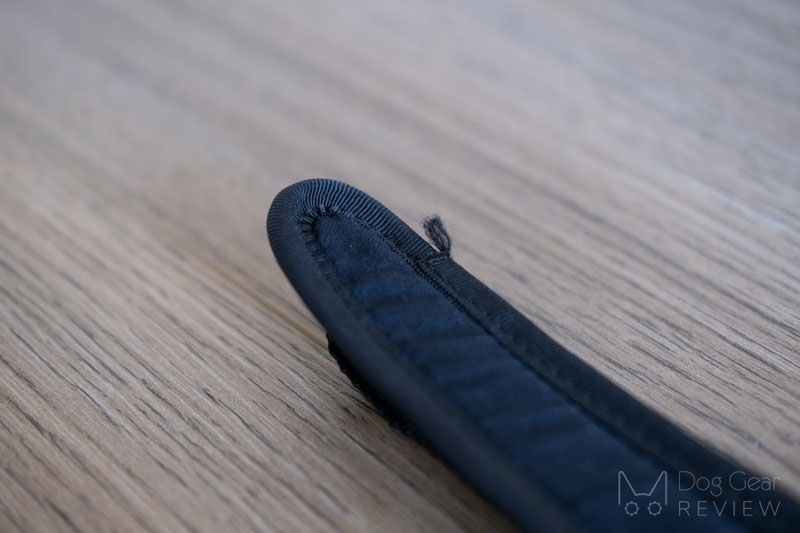
To summarize, this can be a great addition to the harness if it slides too much on your dog or if you want to bring the neck strap lower. It can also help to make the harness more secure if your dog can slide out from it - although it will still not be an escape-proof harness.
The con of using it is that you will need to lift a leg to put it on the dog.
The Review of the IDC® Front Control Y-Belt with a D-ring
The Front Control Y-Belt can be similarly used as the above described Distribution Pad with the leash attached to the back of the harness, but it also has a no-pull front ring. The main difference (besides the ring) between the two is that while the Distribution Pad is soft and padded, the Front Control Pad was made from a simple strap material.

No-pull rings and no-pull harnesses are great tools to use while training your dog to walk properly on the leash, but we have to keep in mind that they are tools, not solutions. The reason behind this is that a well-positioned and adjusted no-pull harness has to be close to the armpits, which can rub the legs or restrict the shoulder movement in the long run. If you leave enough room behind the front legs to avoid these and use the front ring, the harness will just turn to the side when the dog pulls. This can change the way how the dog walks, put pressure on the joints, or they can even step out from the harness.
The good thing in using the Front Control attachment for the IDC Powerharness is, that you can change the lengths of all straps and also adjust the Y-belt (within a range) to create a “tighter fit” for training, then loosen the neck strap and use it with the back ring again without restricting the movement.
Our experience is that 90% of the harnesses with no-pull rings are just sliding to the side and pulling the front legs to the side when the dog pulls; therefore, they are not great even for a shorter time. It took a few tries to tighten all the straps of the Powerharness properly for the Front Control, but once it was done, it worked well. It does turn the harness slightly but not as much as most of the other no-pull solutions.
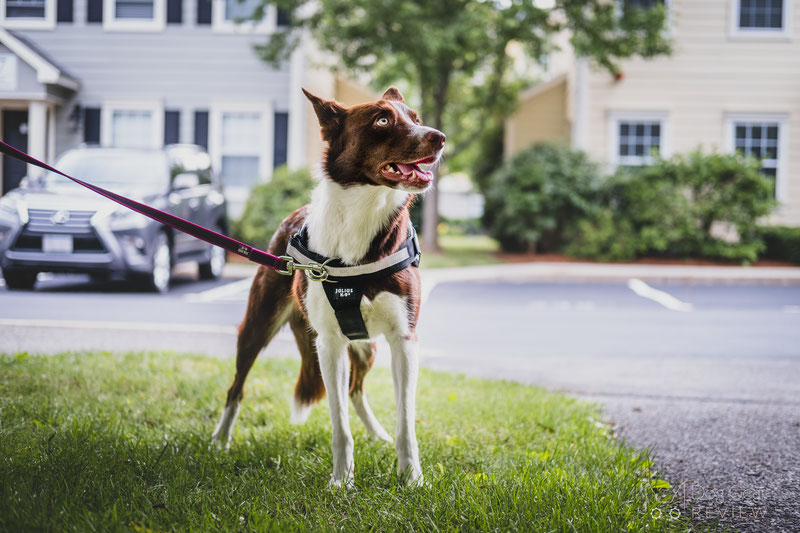
Setting this up can also be a little tricky first, but Julius-K9 has another video showing how to do it and even an instruction below. It will take a few tries to find the best fit for the dog, but take your time. It’s important to find the adjustments where the harness isn’t sliding on the dog but it does not restrict the movement too much.

This extra attachment is also secured by velcro, but the outside part of the neck strap goes through the D-ring. This provides a secure pressure distribution when you pull the harness forward or to the side by the ring.
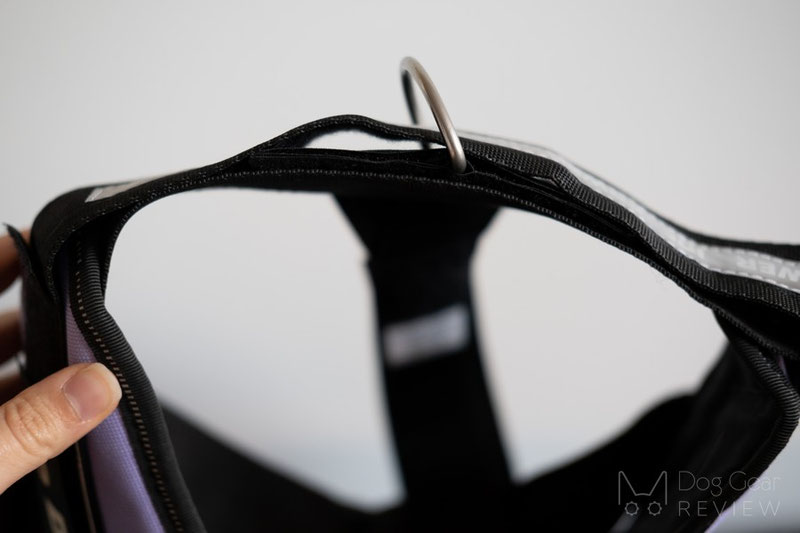
To summarize, this is a great way to add a no-pull ring to a harness while training. We highly suggest not using the harness with this tighter adjustment for too long - only while training the dog. We would also recommend not using it much for off-leash activities since the chest straps will be closer to the armpits, which can restrict the shoulder when the dog runs. For additional control during training, you can use a leash with double carabiners so that you can attach one to the front ring and one to the back ring of the harness.
Adding the Front Control will also result in lifting one leg to put on the harness, but you also have the opportunity to pull the buckle of the chest strap through the loop at the end of the Front Control Pad if that’s easier.
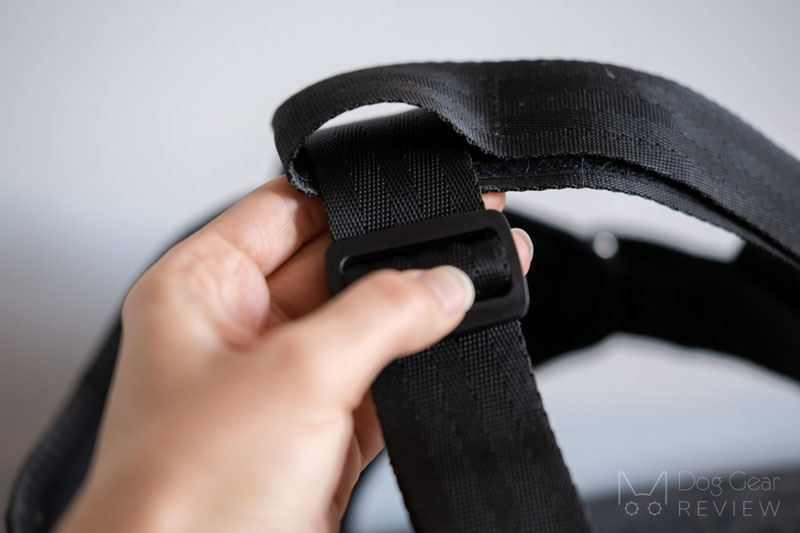
The Front Control Y-Belt comes in three sizes.
IDC® Universal Side Bag Review
The IDC Universal Side Bags can be attached to the velcro on both sides of the IDC harness. The Julius-K9 labels on the side bags can be replaced with a custom label just as on the harness.
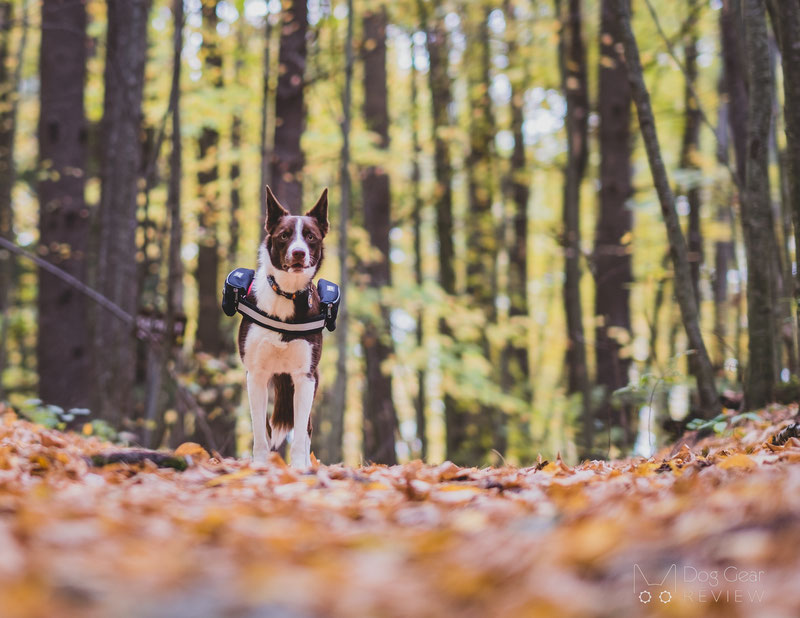
The material of the bags is easy to clean, and the bags are waterproof. They come in different colors and are perfect for holding small items like treats, a ball, or poop bags.
The Universal side bags are securely attached to the neck strap with a metal ring. You have to pull the strap through the rings so the bags will not get loose for sure.
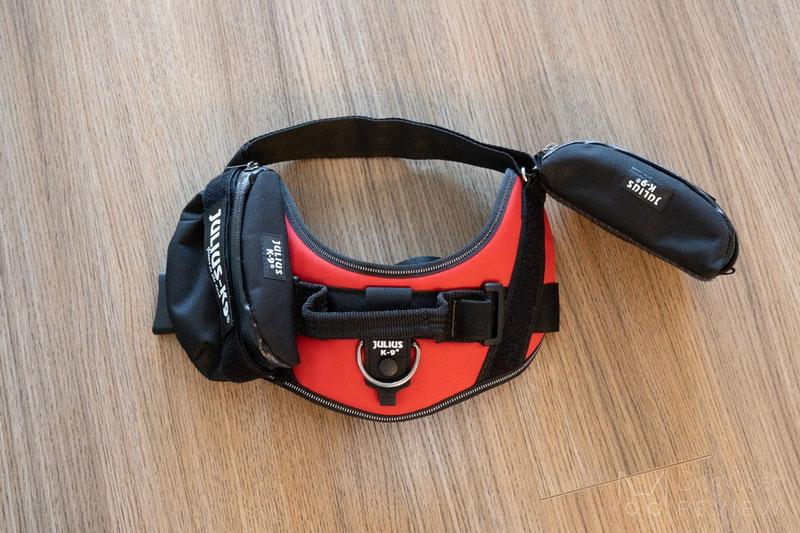
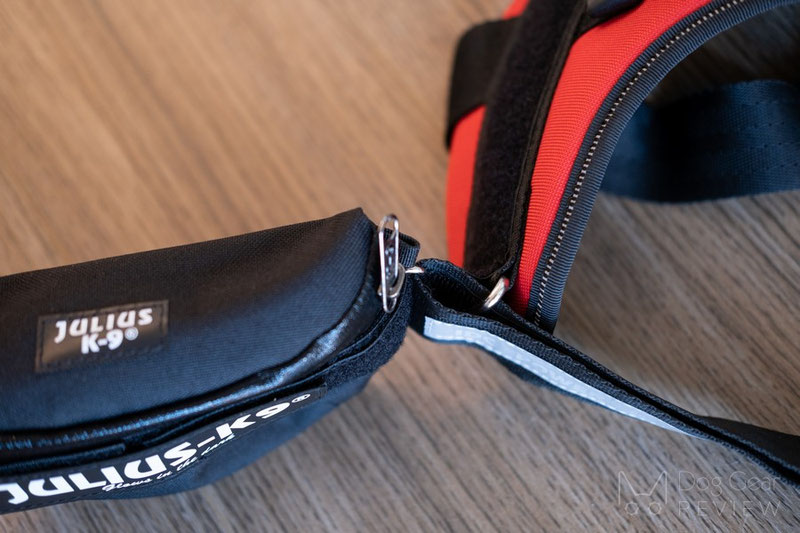
My concern was that the bag itself is only held by velcro. This solution works well for everything else on this harness, but if you put anything heavy or big in the bags, they will slowly start “peeling off” from the velcro when the dog walks. This is less of an issue during the first few times, but dirt will slowly get into the open parts of the velcro, and the packs will have less and less surface to stick to.
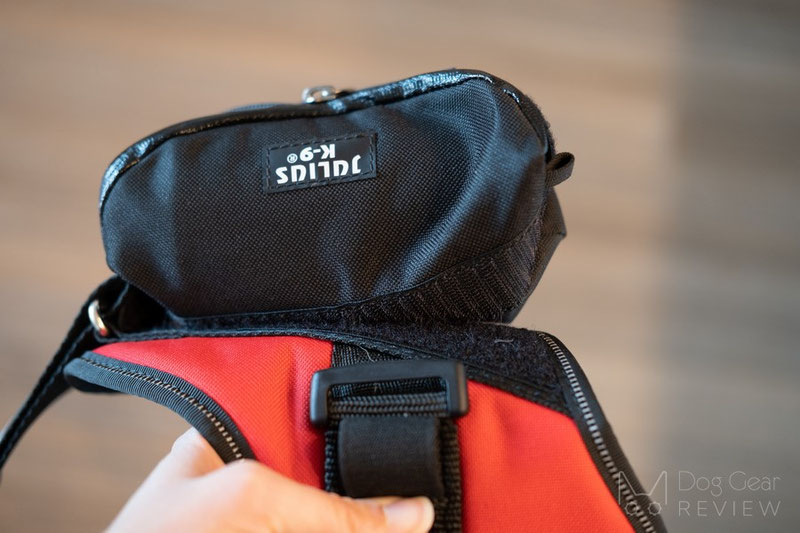
To summarize, these side packs worked perfectly while we tested them without any significant weight or volume in them. They stayed attached and did not get stuck on anything in the forest. Looking at the size, keeping small and light items was the goal with these packs, and they are perfect for that. If you want your dog to carry weight or bigger items, I would suggest looking into the bigger version of this bag that we haven’t tested yet.
The Side Bags come in two sizes, one for the harnesses from baby2-mini sizes and a bigger one for mini to size 4 harnesses.
Functionality Review
No-pull correction: I wouldn’t suggest using it without the Front Control Y-Belt if your dog pulls. Without a front attachment point, it will not help to teach better leash manners, and it can also hurt the dog’s shoulders.
Running/Biking (as an occasional hobby, buy specific equipment if you want to get into it seriously) Only use it if your dog is perfectly trained and only runs next to you without putting ANY pressure on the leash and be sure the harness leaves enough room for the front legs. No bikejoring, sledding, etc. with this harness!
Hiking: The handle is a big help to hold your dog in the mountains or lift him/her if needed. Keep in mind that the harness has to be correctly adjusted to be sure the dog is not sliding out when lifting - if needed, you can purchase a chest pad for additional safety. As always, be sure the dog can run, jump comfortably in it without any restriction before going for a hike!
City walk: If your dog gets scared easily, buy a chest pad to make it safer. The custom velcro text can be a big plus in a busy neighborhood to let other people know if your dog is reactive/shy/friendly etc. or to put your contact information on it in case your dog would run away. You can buy these from Julius-K9 in different colors and even with phosphorescent or reflective text.
Easy to put on/adjust: you just have to put it over the head and use one buckle. It is excellent for big-headed dogs or for those who are afraid of putting a tight harness over their heads. I found it useful for walking up to agility training (where you remove it for the training and putting it back after) or for a quick walk when you want to put something on the dog quickly and be able to remove it with one click.
Visibility: great! It has bright colors and reflective parts all over - I think that the visibility and the custom velcro text are the most significant features of this harness.
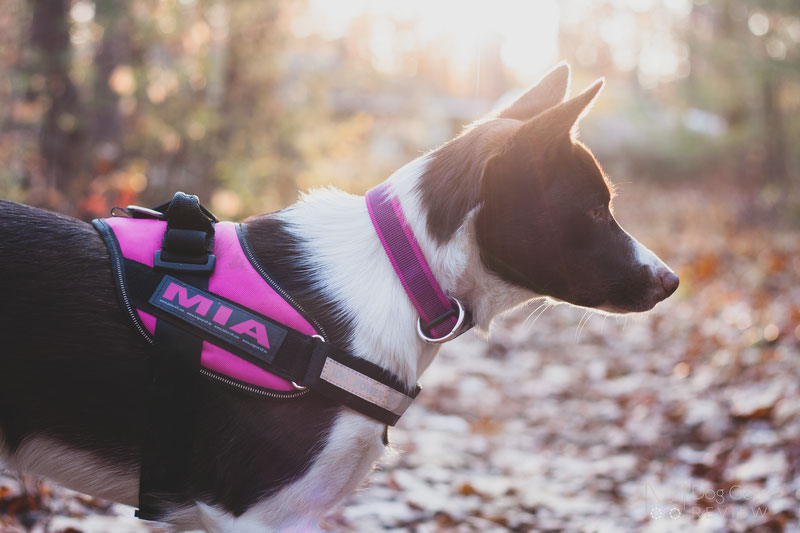
Review Summary
This harness is probably the most famous Norwegian harness and for a reason. The quality material makes it easy to use, easy to clean, and it is also a durable one. When choosing the harness, be sure to follow the sizing chart and accurately measure your dog because while both straps are adjustable, the size of the saddle also determines the position of the harness.
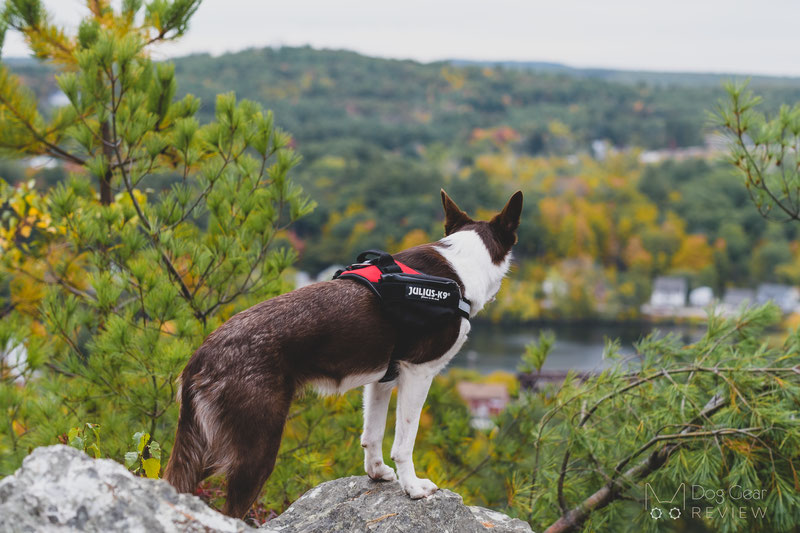
Where to buy
The IDC harness is available on their website, on Amazon and you can probably also find retailers and stores in your country.
The leash and collar on some of the photos are also from Julius-K9, check out the review of the Color and Gray Collar and leash set on the link!
Disclaimer: this review contains an Amazon affiliate link, which supports Dog Gear Review if you purchase the product after clicking on it without costing you anything extra. Using affiliate links will never compromise us writing unbiased, honest reviews!
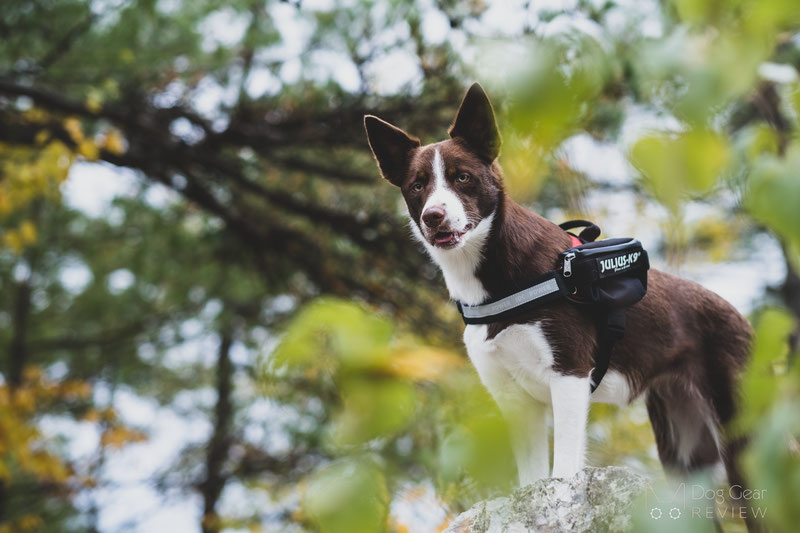
Mia’s measurements
Many of you asked Mia’s measurements to better understand the different products’ fit. Your best chance of finding a good fitting gear is always to measure (and remeasure) your dog. Even we grab the measuring tape before getting a new product - even though we tested a lot of them, and have a good feeling of her size by now.
I share her measurements below, but don’t go ahead and order the same size just because your dog is similar to Mia ;)
Shoulder height: 19.5 inches (50 cm)
Weight: 37-44 pounds (17-20 kg)
Widest chest circumference (where the most harness would have the chest strap): 25-26 inches (63-65 cm)
Neck circumference for collars: 15-16 inches (38-40 cm)
Back lengths: 22 inches (56 cm)
